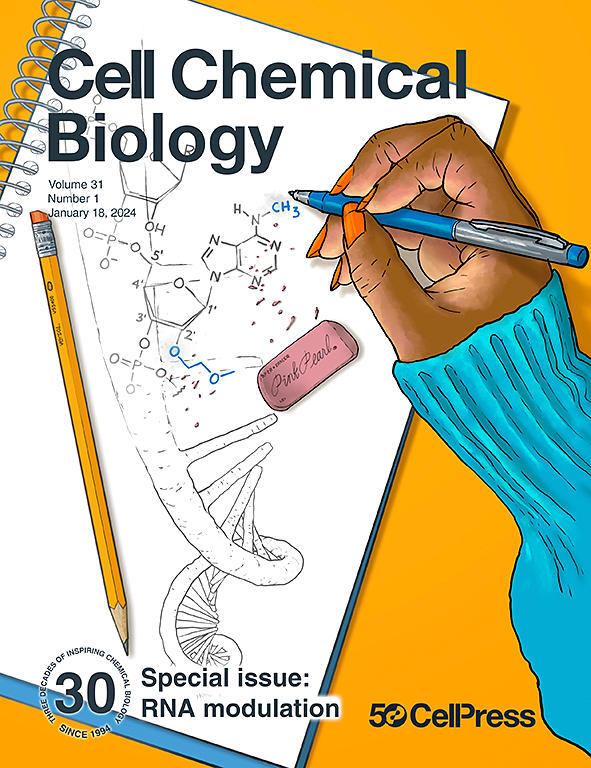Discovery of a tau-aggregate clearing compound that covalently targets P4HB
IF 7.2
1区 生物学
Q1 BIOCHEMISTRY & MOLECULAR BIOLOGY
引用次数: 0
Abstract
The improper folding and aggregation of tau are linked to several neurodegenerative diseases affecting millions worldwide. However, the pathogenesis of tauopathies remains poorly understood, resulting in limited effective treatments. Here, we employ an integrated chemoproteomic phenotypic strategy to identify druggable targets and corresponding chemical probes for the treatment of tauopathies. We identified and optimized an indole-amine compound that potently and extensively clears tau aggregates in two human tauopathy models. Mechanistic and chemoproteomic studies implicate protein disulfide isomerase 1 (P4HB) as the primary target, forming covalent adducts upon metabolic activation. Knockdown of P4HB reduced tau aggregates in three tauopathy models, including an ex vivo murine neuron preclinical model. Functional characterization revealed the compound induces mild endoplasmic reticulum (ER)-stress responses as assessed by RNA sequencing and whole proteomic profiling. Our findings highlight P4HB as a potential therapeutic target for treatment of tauopathies.

发现共价靶向P4HB的tau聚集体清除化合物
tau蛋白的不当折叠和聚集与影响全球数百万人的几种神经退行性疾病有关。然而,牛头病的发病机制仍然知之甚少,导致有限的有效治疗。在这里,我们采用综合的化学蛋白质组学表型策略来确定可药物靶点和相应的化学探针来治疗tau病。我们鉴定并优化了一种吲哚胺化合物,该化合物在两种人类tau病模型中有效且广泛地清除tau聚集体。机制和化学蛋白质组学研究表明,蛋白质二硫异构酶1 (P4HB)是主要靶点,在代谢激活后形成共价加合物。P4HB的敲低降低了三种tau病变模型中的tau聚集,包括离体小鼠神经元临床前模型。通过RNA测序和全蛋白质组学分析,功能表征显示该化合物诱导轻度内质网(ER)应激反应。我们的研究结果强调P4HB是治疗牛头病的潜在治疗靶点。
本文章由计算机程序翻译,如有差异,请以英文原文为准。
求助全文
约1分钟内获得全文
求助全文
来源期刊

Cell Chemical Biology
Biochemistry, Genetics and Molecular Biology-Molecular Medicine
CiteScore
14.70
自引率
2.30%
发文量
143
期刊介绍:
Cell Chemical Biology, a Cell Press journal established in 1994 as Chemistry & Biology, focuses on publishing crucial advances in chemical biology research with broad appeal to our diverse community, spanning basic scientists to clinicians. Pioneering investigations at the chemistry-biology interface, the journal fosters collaboration between these disciplines. We encourage submissions providing significant conceptual advancements of broad interest across chemical, biological, clinical, and related fields. Particularly sought are articles utilizing chemical tools to perturb, visualize, and measure biological systems, offering unique insights into molecular mechanisms, disease biology, and therapeutics.
 求助内容:
求助内容: 应助结果提醒方式:
应助结果提醒方式:


